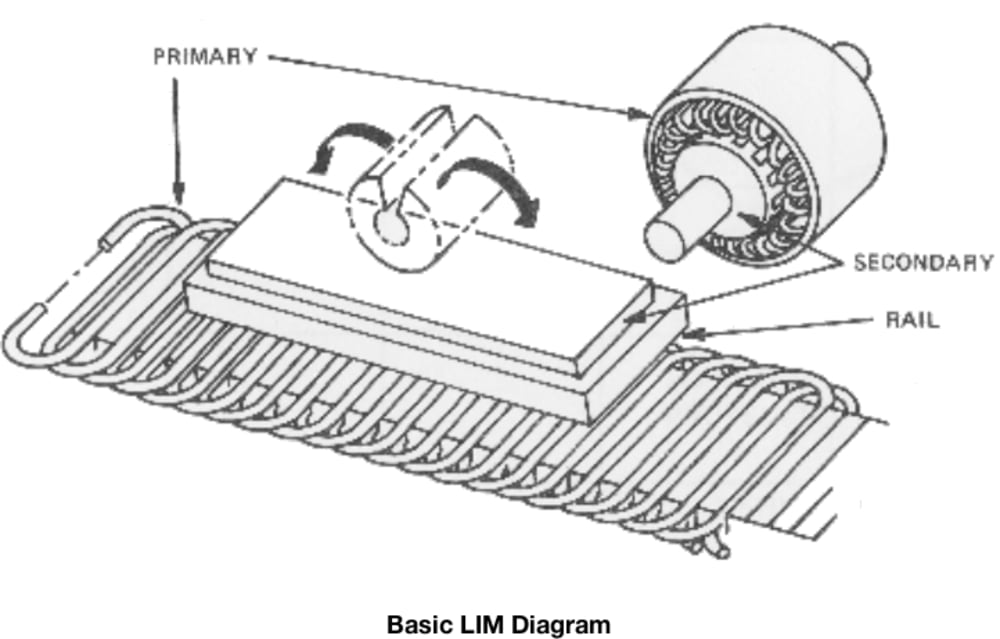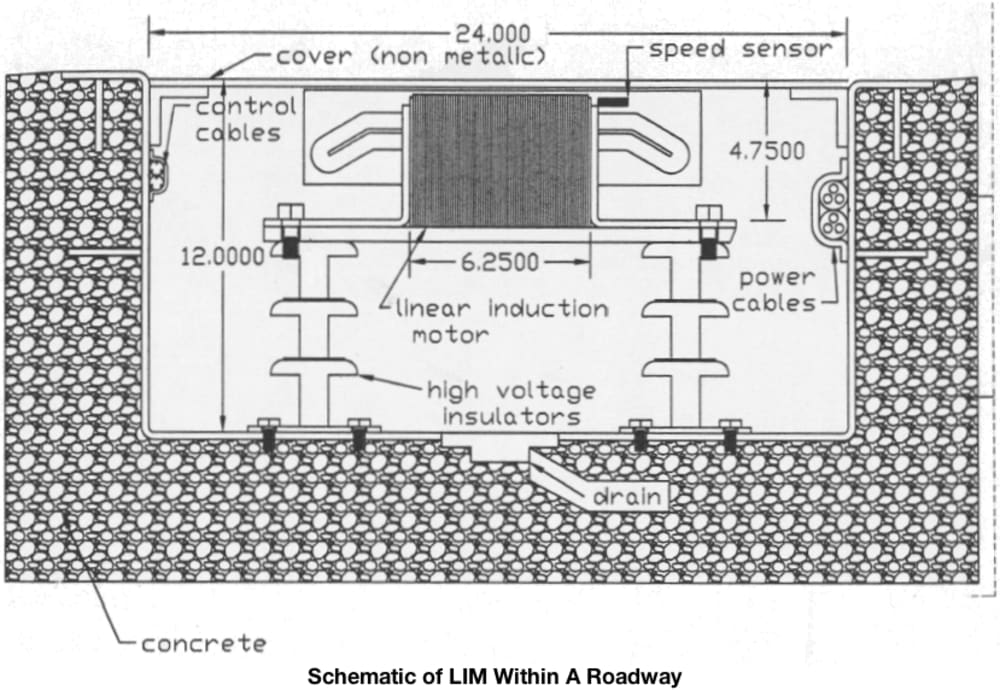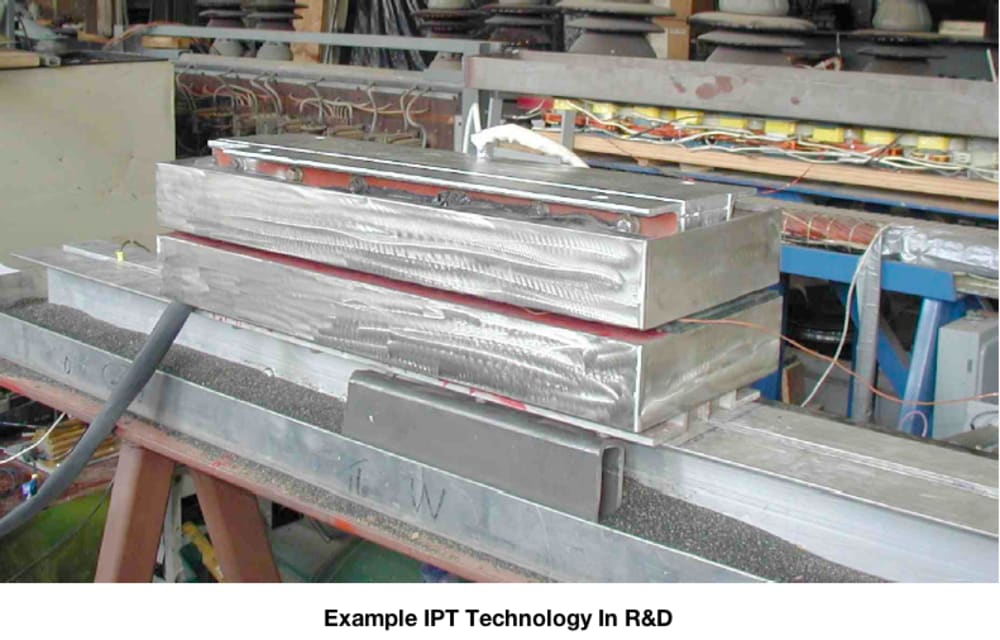Current surface transportation technology contributes to over two-thirds of US petroleum consumption and nearly one-third of greenhouse gas emissions. Measures to decrease this reliance on petroleum will improve national security and decrease global climate change. Electric vehicles (EVs) offer such an opportunity, but challenges with battery capacity, rate of power delivery, and recharging requirements limit vehicle range, acceleration, and convenience, respectively. Methods for reducing fuel consumption by aircraft during idling, taxiing, and take-off also offer opportunities for increased efficiency. NASA-GSFC proposes the novel implementation of both linear induction motor (LIM) and inductive power transfer (IPT) technologies to transform EVs into a viable transportation solution and to reduce aircraft fuel consumption.
A LIM is simply a cylindrical motor that has been "unrolled" such that the traditional motor-shaft rotation is replaced by the linear motion of one part of the motor — in this case, a vehicle. LIMs are the basis of propulsion behind common applications such as roller coasters and airport trams as well as high-tech applications including rail guns and re-usable space launch vehicles. IPT technology enables energy to be transferred wirelessly through basic induction processes and is found in common applications such as recharging mats for electronics. For road transportation, LIM and IPT technologies can respectively propel and charge EVs at strategic points to mitigate transportation challenges presented by the use of batteries. The utilization of LIM within ramps to interstate highways, for example, would enhance the viability of EVs since the majority of vehicle power, on average, is consumed through acceleration onto highways. LIM-specific lanes (comparable to HOV lanes today) are also possible, and power can be transferred back to the grid during deceleration. IPT can be used to charge batteries quickly rather than relying on slower, stationary charging. The combination of LIM and IPT can make EVs a truly viable transportation solution.
In the case of aircraft, much fuel is consumed prior to flight (e.g., idling aircraft waste over 700 million gallons of fuel annually alone). IPT technology could be used to supply power to aircraft, thus eliminating the need to use onboard engines while idling. LIM technology could facilitate aircraft taxiing and greatly decrease the fuel needed for take-off. If LIM were used for deceleration, then power can be stored and reused later. Again, LIM and IPT technologies can be utilized together to decrease oil consumption and protect the environment.
Benefits of employing IPT and LIM technologies to complement EV and aircraft transport include the following:
- Improved fuel economy and decreased emissions for internal combustion and hybrid vehicles (including aircraft)
- Increased range for EVs and full freedom of travel for all vehicles
- Minimized battery discharge, thereby increasing battery life and minimizing hazardous waste disposal
- Greater traffic safety for extended installations by maintaining traffic flows and vehicle separation distance
- Easy retrofitting to existing highway vehicles and aircraft that requires low maintenance
- Low EV "sound pollution" enables money spent on sound barriers to be invested in IPT/LIM infrastructure instead
Like this entry?
-
About the Entrant
- Name:Michael Wright
- Type of entry:teamTeam members:Michael R. Wright, NASA Goddard Space Flight Center
- Patent status:pending








